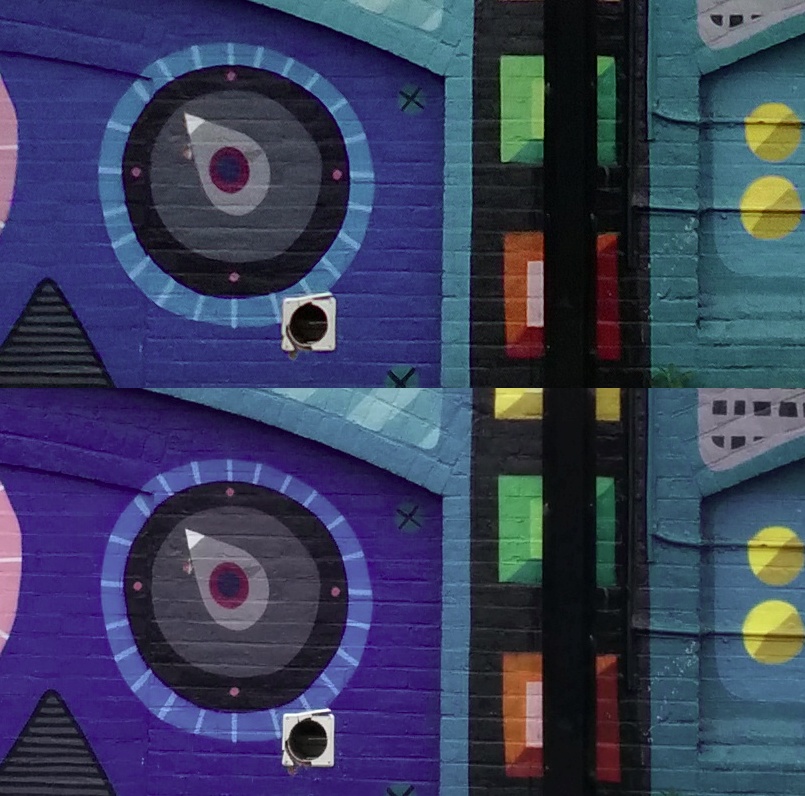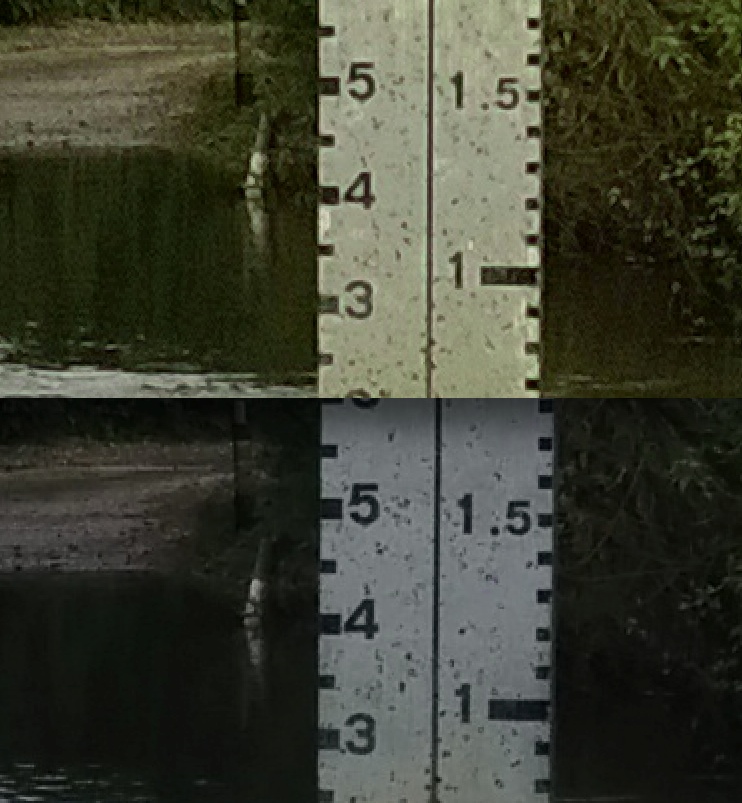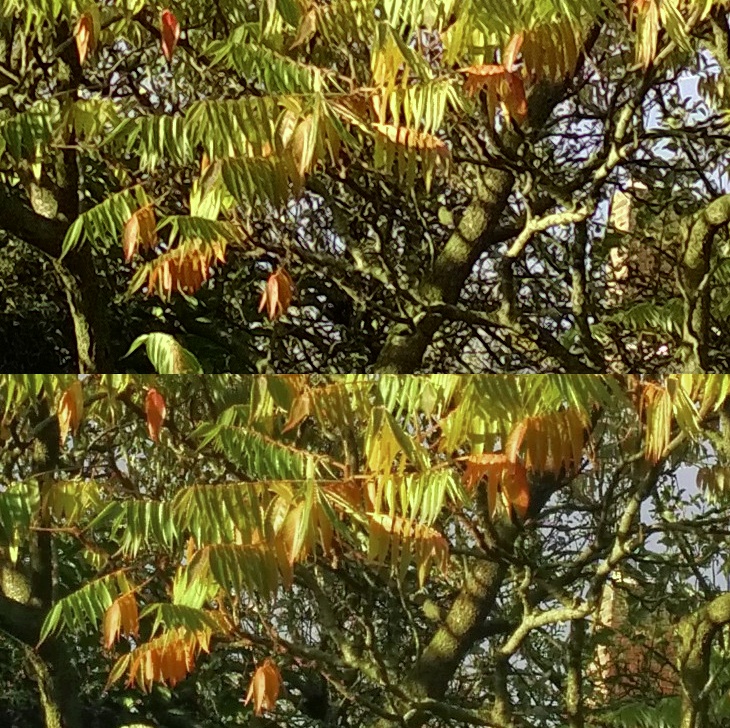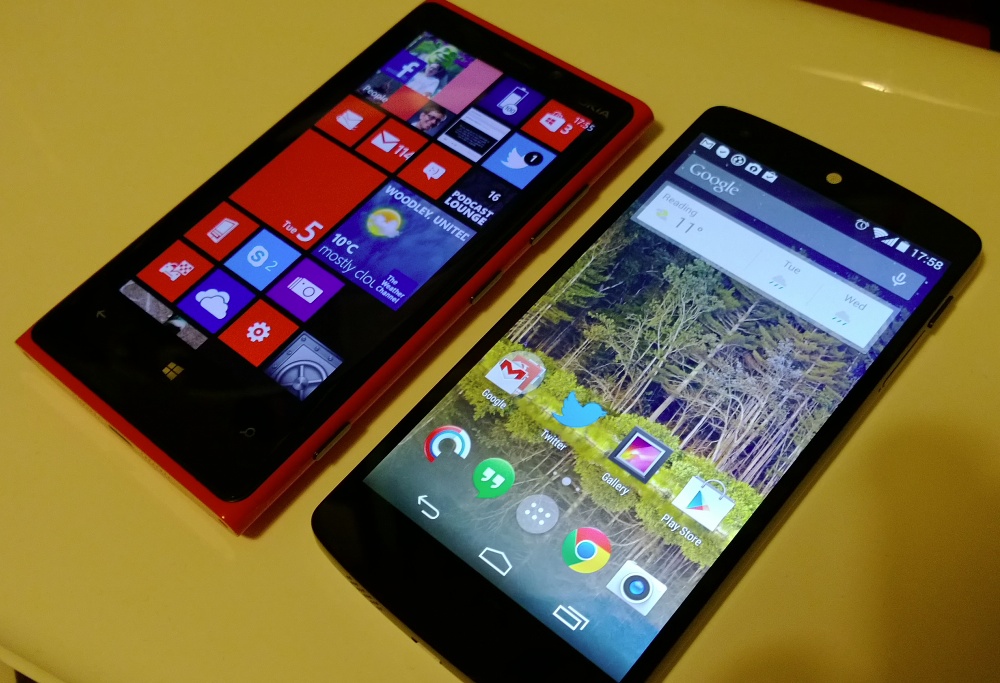From the earlier comparison, my reasons for equating these two devices were:
- Both have Qi wireless charging, still something of a rarity in the smartphone world, but incredibly welcome.
- Both are almost identical in size.
- Both are distinctly mid-range in terms of price, making them both equally fantastic value. The Lumia 920 is currently £200 or so, the Nexus 5 £299, but both massively less than the typical £500 launch price of top smartphones.
- Both have OIS-equipped 8 megapixel cameras, despite not being pitched as specialist camera phones.
- Both come with 32GB sealed storage and no expansion, plus sealed batteries of similar capacity.
- Both use souped up LCD screens rather than AMOLED.
- Neither are considered flagships for their respective manufacturers.
- Both have been, or will be, updated again and again in terms of firmware updates - this is hardware that won't get obsolete.
Hopefully the similarities are fairly compelling to you too, even though the ecosystems and operating systems are very different. What caught my eye though was the camera side of things, both having 8MP, 1/3.2" sensored, OIS-equipped units - surely a shootout is appropriate?
In particular I'd like to see how well LG (which makes the Nexus 5 for Google) has implemented Optical Image Stabilisation. It's well known that Nokia implements OIS with a full 3-axis configuration (roll, yaw, pitch) and by moving the entire optical stack rather than (as HTC implemented OIS on the One) a limited 2-axis config (yaw and pitch only) with just one lens being tilted.
The difference in tests with the One was dramatic, so let's see how LG's OIS implementation stands up, in both crisp stills and cinematic video.
In each case, I used the on-board camera software with no special settings. The Lumia 920 had the latest firmware which, you may remember, was fixed during the summer to provide much better results than in the phone's early days.
Test 1: Beach scene in weak winter sun
A miserably rainy day at the seaside was interrupted by 30 minutes weak sunshine...! Here's the overall scene, as viewed by the Lumia 920:

And here's a salient central crop from the photos from the Lumia 920 (on top) and from the Nexus 5 (on the bottom). Click the links to download the original JPG files if you'd like to inspect them.

There's not much between the two shots - the Lumia 920's image has slightly more artefacts and looks less natural, but then the Nexus 5's image hasn't retained quite so much detail and contrast, especially in the sky. Honours even.
Test 2: Ornamental garden into weak sun
I couldn't resist the weak sun peeking through this little garden grove. Here's the overall scene, as viewed by the Lumia 920:

And here's a salient central crop from the photos from the Lumia 920 (on top) and from the Nexus 5 (on the bottom). Click the links to download the original JPG files if you'd like to inspect them.

Again the Nexus 5's camera manages to produce something that's slightly more natural and with less artificial sharpening, so I'll give it the edge here.
Test 3: Murky overcast, giant wall mural
No, your eyes don't deceive you. this is a giant consumer electronics fascia that's 30 feet high on the side of a building! The light was gloomy, but there's plenty of colour and detail to compare. Here's the overall scene, as viewed by the Lumia 920:

And here's a salient central crop from the photos from the Lumia 920 (on top) and from the Nexus 5 (on the bottom). Click the links to download the original JPG files if you'd like to inspect them.

Again, too close to call, even when pixel peeping like this. Considering the light, both phone cameras did an excellent job, as you can see.
Test 4: Bright overcast, local ford
Always a favourite spot to test phone cameras because of the watery ambience and the helpful depth charts, giving crisp detail to crop into in the medium distance. Here's the overall scene, as viewed by the Lumia 920:

And here's a salient central crop from the photos from the Lumia 920 (on top) and from the Nexus 5 (on the bottom). Click the links to download the original JPG files if you'd like to inspect them.

A win for the Nexus 5 camera here. Considering Nokia's expertise in optics and image processing, to see LG pull off an image with significantly less digital noise, better detail and better coloration is surprising. It's true that you have to crop in to 1:1 to see the differences, but a win is a win....
Test 5: Autumn leaves in the sun
Again a brief sunny respite from UK autumnal weather, I loved the colours in the leaves on this tree. Here's the overall scene, as viewed by the Lumia 920:

And here's a salient central crop from the photos from the Lumia 920 (on top) and from the Nexus 5 (on the bottom). Click the links to download the original JPG files if you'd like to inspect them.

No, your eyes aren't deceiving you, the photos are almost identical, both smartphone cameras produce an excellent image here, as you might expect with so much light available. Well done both.
Test 6: Dark of night, just street lamps
But then we need to push the camera units in these phones by taking the light away. Because both have LED flash only, there's no point in shooting my traditional party moving subject mock-up, since both would be a blurry mess (what, no Xenon?), but we can try out an extreme low light scene which should test the OIS severely with a long shutter time needed. Here's the overall scene, as viewed by the Lumia 920:

And here's a salient central crop from the photos from the Lumia 920 (on top) and from the Nexus 5 (on the bottom). Click the links to download the original JPG files if you'd like to inspect them.

A definite win for the Nexus 5 camera here - although the OIS does a good enough job on both, to keep the frame steady and free of hand-shake, the Android-powered camera does a better job of focussing and resolving finer detail. Plus, although both low light shots had a colour cast, the incandescent browns/oranges of the Nexus 5 shot were a lot closer to reality than the ghastly green night-vision effect in the Lumia 920's low light image.
Test 7: Late at night, bright articial lights
What about a night shot but with plenty of light and detail? Here's a very brightly illuminated bar, as viewed by the Lumia 920:

And here's a salient central crop from the photos from the Lumia 920 (on top) and from the Nexus 5 (on the bottom). Click the links to download the original JPG files if you'd like to inspect them.

Neither image is close to perfect here, of course, but then these are phone cameras at the end of the day and you'd expect some compromises. Both show blown out detail for some of the brighter lights, plus sharpening artefacts, and I'm calling it a draw overall.
1080p OIS video capture test
For the video comparison, I used a custom jig to hold both smartphones rigidly together, shot some 1080p footage and then spliced the two videos together for easy comparison. As usual with embedded videos, you'll probably want to increase the resolution to 720p or higher and also maximise the playback window:
Reversing the slight trend seen in the still image tests, I'd give the win firmly to the Lumia 920 here, with better colours throughout and more consistent detail. Most importantly though, I'd rate the OIS in the Nokia device as being much more effective overall. The LG-made Nexus 5's OIS is effective to some degree but as soon as angular movement exceeds a particular threshold then the mechanism can't cope and you get ugly jarring.
Exact specifications aren't available for these OIS implementations, but I'd estimate that the Nokia hardware can cope with up to a couple of degrees of deviation, while the LG OIS is limited to half (or less). For real life footage, this means that the Lumia 920's camera (and those of the 925/1020 etc.) are far better for keeping a steady, satisfying video image that's less tiring to watch.
Verdict
As the headline proclaims, this one's too close to call overall though - these two top smartphones, both mid-priced now, are still level pegging, even after heavy testing of their photo and video capabilities. The LG-made Nexus 5 is slightly ahead overall in terms of stills, but the 920 makes this ground back with the video capture test.
The takeaway here then is that for low light stills, Nokia has some serious OIS competition from other manufacturers now, though no company takes the OIS implementation as far. Images in good light from almost any modern smartphone camera are very similar, so it really is the edge cases like low light that show up differences. Plus video capture, as seen above.
PS. If you were looking for a similar comparison of the camera-specialist Lumia 1020 versus the Nexus 5, see this introductory feature.

